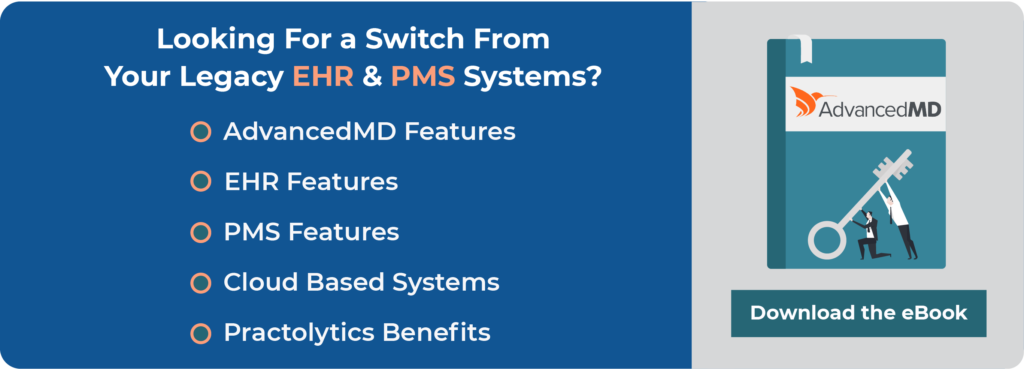Empowering healthcare in 2024 unleashing potential of EHRs
In 2024, the healthcare industry continues to evolve, driven by technological advancements and a strong focus on patient-centered care. At the forefront of this transformation is the widespread adoption of Electronic Health Records (EHRs), which have revolutionized the way healthcare providers manage patient data, streamline operations, and enhance care delivery. As the industry moves forward, EHRs remain a key catalyst for innovation, particularly in advancing data exchange and interoperability. With seamless integration and real-time access to critical patient information, EHRs are unlocking new possibilities for collaboration, efficiency, and improved health outcomes. Empowering healthcare in 2024 unleashing potential of ehrs, highlighting their potential to empower healthcare providers and optimize patient care.
Table of Contents
EHRs: Foundation of Data Exchange
EHR systems, often termed Electronic Medical Records (EMRs), have emerged as the foundational technology supporting data exchange in the healthcare sector. These digital systems act as a centralized repository for patient records, encompassing comprehensive details about medical history, diagnoses, treatments, and more. The integration of EHRs has enabled a shift from paper-based records to more efficient and secure methods of data management.
In 2024, EHRs have evolved to offer a unified, real-time perspective of a patient’s health history. They play a pivotal role in facilitating data exchange, ensuring crucial patient information is readily accessible to authorized healthcare professionals. The capability to access, update, and share information seamlessly across various providers, clinics, and hospitals is essential for delivering high-quality, coordinated care. This transformation proves especially advantageous for healthcare professionals relying on accurate and current patient information.
Evolution of EHRs
The evolution of EHRs has been remarkable, transitioning from basic data storage systems to sophisticated platforms with diverse functionalities. Anticipating the year 2024, EHR systems are poised to become multifaceted and interconnected, revolutionizing data exchange and interoperability.
1. Standardization of Data:
A pivotal aspect of EHR evolution is the standardization of data. In 2024, EHR systems are expected to adopt standardized coding and terminologies like SNOMED CT, LOINC, and CPT. This adoption aims to simplify data interpretation, fostering seamless exchange and interoperability among healthcare providers.
2. Interoperability:
Overcoming the historical challenge of interoperability, EHR systems in 2024 are projected to actively contribute to improved connectivity. Modern platforms will be designed with interoperability in mind, adhering to standardized data formats and communication protocols. This approach enables integration with other health information systems, facilitating access to external data sources and promoting informed decision-making.
3. Cloud-Based EHRs:
Anticipated to gain prominence in 2024, cloud-based EHRs offer scalability, accessibility, and cost-effectiveness. Enabling healthcare professionals to access patient records and data from any location with an internet connection, these systems simplify information exchange between practices and healthcare facilities.
4. Patient Portals:
EHRs in 2024 are likely to feature patient portals, empowering individuals to access their health information, schedule appointments, and communicate with healthcare providers. This enhanced patient engagement is expected to improve the overall patient experience and foster meaningful data exchange between patients and healthcare professionals.
Role of EHR in Data Exchange and Interoperability
EHRs stand as the linchpin for achieving genuine interoperability and data exchange in the healthcare landscape, offering a centralized hub for patient information. Their contributions to these goals are manifold:
1. Centralized Patient Data Repository:
EHRs consolidate patient information into structured formats, providing authorized users with a single, comprehensive source. This eliminates the need for sifting through paper documents or navigating multiple systems, enabling medical professionals to make more informed decisions efficiently.
2. Streamlined Access to Patient Data:
Facilitating swift access to patient records regardless of location, EHRs break down geographical barriers. This is particularly valuable for practices with multiple locations and healthcare professionals engaged in telemedicine, ensuring that patient data is readily available when and where needed.
3. Data Standardization:
EHRs actively contribute to the standardization of health data, adhering to formats and standards that promote interoperability. As healthcare providers adopt common data exchange standards like FHIR, EHRs serve as bridges between different systems, facilitating seamless data flow.
4. Ensuring Secure Data Sharing:
Built with robust security features, EHR systems use encryption, user authentication, and audit trails to protect patient data during exchanges. By addressing security concerns, EHRs play a pivotal role in ensuring the integrity of interoperability efforts.
5. Enhanced Communication:
EHRs foster effective communication among healthcare professionals through features like secure messaging, alerts, and notifications. This real-time collaboration is especially critical in scenarios requiring prompt and coordinated care.
6. Improved Patient Engagement:
EHRs contribute significantly to patient engagement by integrating patient portals. This empowers individuals to access their medical records, test results, and treatment plans. By playing an active role in their healthcare, patients contribute to better outcomes.
Data Exchange Challenges
In the journey of promoting data exchange, EHRs face persistent challenges in 2024 that are crucial to address for a resilient healthcare ecosystem:
1. Data Privacy and Security:
As data sharing increases, ensuring the confidentiality and safety of patient data remains paramount. EHR systems must enhance security measures to thwart data breaches and unauthorized access in 2024.
2. Data Ownership and Control:
The issue of determining data ownership and control continues to be contentious. Striking the right balance between patients’ desire for control and healthcare providers’ need for access presents an ongoing challenge.
3. Standardization Challenges:
Despite significant progress, achieving data standardization across diverse EHR systems remains a hurdle. Ongoing efforts are essential in 2024 to establish common standards, facilitating seamless data exchange in the healthcare landscape.
4. Interoperability Across Specialties:
EHR systems tailored to specific specialties within health services may not seamlessly connect with each other. Ensuring interoperability across diverse specialties remains an ongoing challenge in the pursuit of true interoperability.
5. Economic Considerations:
Smaller practices may face challenges in implementing and maintaining EHR systems with robust data exchange capabilities. Addressing economic disparities in healthcare IT adoption is critical for ensuring equal access to these essential tools.
Looking Forward to 2024 and Beyond
As we approach 2024, the role of EHRs in data exchange and interoperability is poised to expand, with several key trends and developments on the horizon:
1. Widespread Adoption of FHIR:
Fast Healthcare Interoperability Resources (FHIR) is anticipated to gain widespread adoption as a common data exchange standard. Supported by major EHR vendors and healthcare organizations, FHIR will play a pivotal role in enhancing interoperability, allowing seamless sharing of patient information among different systems.
2. Blockchain for Data Security:
EHR systems are expected to explore blockchain-based solutions to enhance data security and integrity. Blockchain technology will contribute to ensuring the trustworthiness of health data, addressing concerns related to data security.
3. AI Integration:
EHR systems will increasingly integrate Artificial Intelligence (AI) capabilities. AI-driven tools will process extensive datasets, detect patterns, and support healthcare professionals in making more precise diagnoses and treatment choices, elevating the standard of care.
4. Incorporating Internet of Things (IoT):
The growing adoption of IoT devices, such as wearable health monitors and smart medical equipment, highlights the importance of EHRs in aggregating and utilizing data from these devices. This integration enables continuous patient monitoring and provides valuable insights into individual health conditions.
5. Improved Patient Portals:
Patient portals integrated with EHRs will become more sophisticated, offering patients greater control over their healthcare. Enhanced functionalities will enable seamless appointment scheduling, prescription refill requests, and access to educational materials.
6. Expanding Telemedicine Capabilities:
EHRs will continue to support telemedicine by facilitating remote consultations and data exchange between patients and healthcare providers, contributing to the ongoing evolution of healthcare delivery.
7. Advanced Analytics and Reporting:
EHRs will offer enhanced capabilities for data analytics and reporting. This empowers healthcare professionals to access real-time information, generate comprehensive reports, and identify trends to enhance both patient care and operational efficiency.
In 2024, EHRs are more crucial than ever, evolving from record-keeping systems to powerful tools for enhancing patient care and facilitating the seamless exchange of medical data. By adopting interoperability standards, investing in infrastructure, and prioritizing data security, healthcare practices can fully unlock the potential of EHRs.
As the healthcare industry embraces technological advancements, including AI, patient-controlled data, blockchain, and wearable device integration, staying informed and leveraging EHRs for data exchange will be key to providing optimal patient care and achieving better healthcare outcomes.
Practolytics, in partnership with AdvancedMD, offers cutting-edge EHR services, ensuring healthcare providers have access to advanced technology and tools to enhance patient care and streamline operations. Our commitment to innovation and interoperability empowers healthcare professionals to excel in this evolving landscape.
ALSO READ – Exploring the Future of Healthcare RCM: A 2023 Market Analysis
Talk to Medical Billing Expert Today — Get a Free Demo Now!






